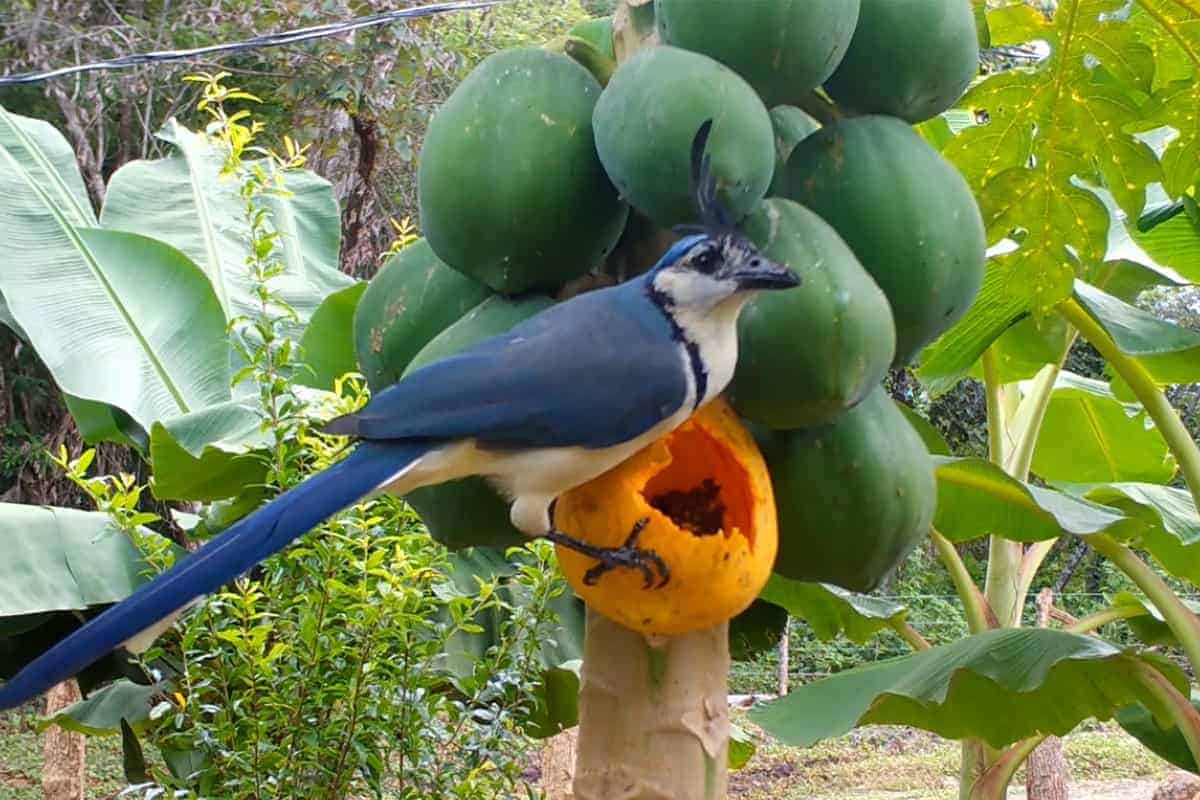Big, pretty and blue. What’s not to love?
The white-throated magpie-jay is frequently one of the first birds that a visitor sees when they arrive on Costa Rica’s western coast that makes them think – Ooh. I’m somewhere tropical. They’re large and colorful. A very pretty mix of blue, black and white. Their signature feature is a tuft of feathers on top of their heads that screams – Hey! Look at me!
I grew up mostly in Pennsylvania. It feels like at least 90% of all the birds there are little and brown. If you happened by a bird with some yellow on it, you told somebody. A colorful bird was news.
When a just-got-here-a-minute-ago guy from a similarly boring bird background, particularly one who is unaware of Costa Rica’s colorful bird glory, runs into a magpie jay it makes an impression. For instance, my dad has a framed painting of one hanging on his wall in New Jersey.
The trouble comes when you spend a little more time observing and interacting with our friend the Urraca (the common Spanish name). I’ll give you some snippets of the literature describing the magpie jay’s habits – they are “noisy, gregarious birds” often traveling in “noisy flocks”. Another source describes them as “unavoidably noisy and impossible to overlook” and has vocalizations with “raspy scolding notes.”
So at first you think – Wow, this is great. Look at these blue birds. Very pretty.
And then, after a while, it turns to – I get it. You’re all over the place and you’re yelling at me.
The other part of their natural history that can be a bummer for those interacting with magpie-jays is that they’re omnivorous. The literature says they eat “caterpillars, katydids, roaches, beetle grubs and small frogs and lizards.” They also “sip nectar from large blossoms and steal pupae from wasp nests.”
That seems fine.
Then it continues “they eat a wide variety of fruit including cultivated varieties.” I can attest to this. They are terrible papaya thieves. As soon as one of my papaya trees produces a winner, they attack it about a day before it looks ready to harvest. So, gardeners sometimes have a bone to pick with them.
It can also be a downer when you read that they “take eggs and nestlings of other birds.” Nobody’s pumped to see a big loud group of birds pounce on a nest and eat a bunch of nestlings.
Personally, I’m a fan. I like watching them work through the leaves of the forest, inquisitively checking every nook and cranny for a bite to eat. They seem intelligent.
I also enjoy recording them on my camera traps. The most common video is an aggressively splashy group bath at a water hole in Guanacaste during dry season. There will surely be a few of those in the following video. Enjoy.
About the Author
Vincent Losasso, founder of Guanacaste Wildlife Monitoring, is a biologist who works with camera traps throughout Costa Rica. Learn more about his projects on facebook or instagram. You can also email him at: vincent@guanacastewildlifemonitoring.com

